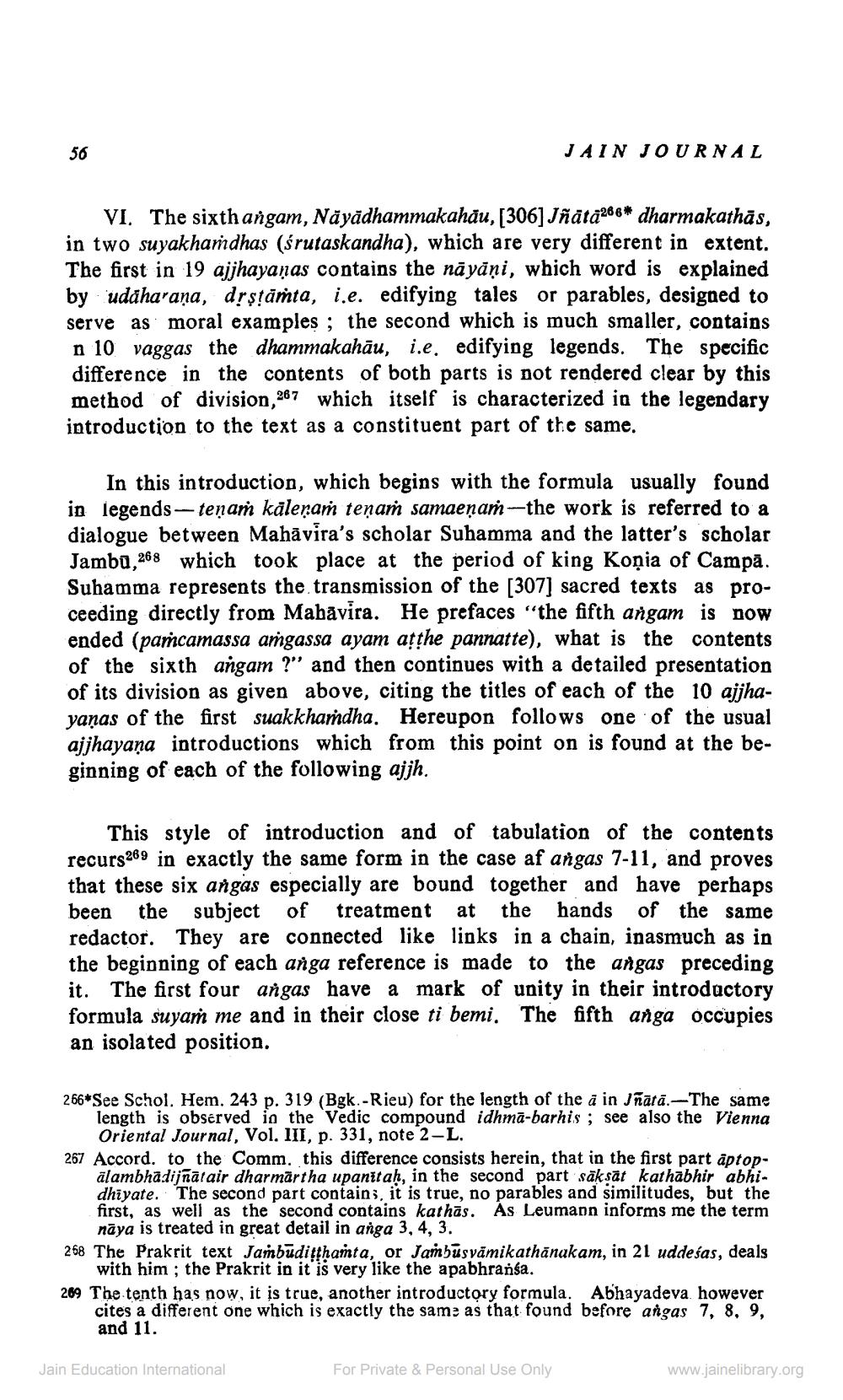________________
JAIN JOURNAL
VI. The sixthangam, Nāyādhammakahäu, [306] Jñata286* dharmakathās, in two suyakhamdhas (śrutaskandha), which are very different in extent. The first in 19 ajjhayaņas contains the nāyāņi, which word is explained byudaharaṇa, drstāṁta, i.e. edifying tales or parables, designed to serve as moral examples ; the second which is much smaller, contains n 10 vaggas the dhammakahāu, i.e. edifying legends. The specific difference in the contents of both parts is not rendered clear by this method of division,287 which itself is characterized in the legendary introduction to the text as a constituent part of the same.
In this introduction, which begins with the formula usually found in legends-tenaṁ kaleram tenaṁ samaenam--the work is referred to a dialogue between Mahāvira's scholar Suhamma and the latter's scholar Jambu,268 which took place at the period of king Koņia of Campā.
mma represents the transmission of the [307] sacred texts as proceeding directly from Mabāvira. He prefaces “the fifth angam is now ended (pascamassa aṁgassa ayam ațțhe pannatte), what is the contents of the sixth angam ?" and then continues with a detailed presentation of its division as given above, citing the titles of each of the 10 ajjhayaņas of the first suakkhardha. Hereupon follows one of the usual ajjhayaņa introductions which from this point on is found at the beginning of each of the following ajjh.
This style of introduction and of tabulation of the contents recurs269 in exactly the same form in the case af angas 7-11, and proves that these six angas especially are bound together and have perhaps been the subject of treatment at the hands of the same redactor. They are connected like links in a chain, inasmuch as in the beginning of each anga reference is made to the angas preceding it. The first four angas have a mark of unity in their introductory formula suyaṁ me and in their close ti bemi. The fifth anga occupies an isolated position.
266*See Schol. Hem. 243 p. 319 (Bgk.-Rieu) for the length of the à in Jnātā.-The same
length is observed in the Vedic compound idhma-barhis; see also the Vienna
Oriental Journal, Vol. III, p. 331, note 2-L. 267 Accord. to the Comm. this difference consists herein, that in the first part aptop
ālambhadijñātair dharmärtha upanitah, in the second part sāksāt kathabhir abhidhiyate. The second part contains, it is true, no parables and similitudes, but the first, as well as the second contains kathās. As Leumann informs me the term
nāya is treated in great detail in anga 3, 4, 3. 268 The Prakrit text Jambuditthanta, or Jambusvāmikathānakam, in 21 uddeśas, deals
with him ; the Prakrit in it is very like the apabhransa. 269 The tenth has now, it is true, another introductory formula. Abhayadeva. however
cites a different one which is exactly the same as that found before angas 7, 8, 9, and 11.
jambu it is versiner intreamz a
Jain Education International
For Private & Personal Use Only
www.jainelibrary.org




